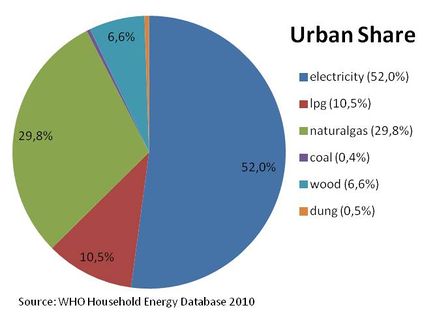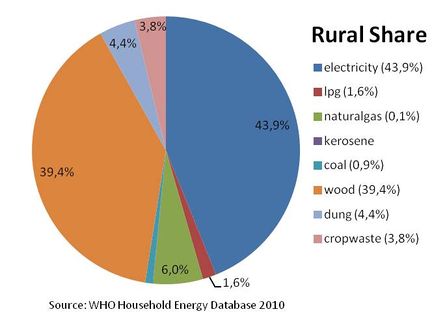Knowledge fuels change
For over a decade, Energypedia has shared free, reliable energy expertise with the world.
We’re now facing a serious funding gap.
Help keep this platform alive — your donation, big or small, truly matters!
Thank you for your support
Difference between revisions of "Tajikistan Energy Situation"
***** (***** | *****) |
***** (***** | *****) m |
||
| Line 5: | Line 5: | ||
| align="center" colspan="4" | '''Tajikistan''' | | align="center" colspan="4" | '''Tajikistan''' | ||
|- | |- | ||
| − | | [[Image:600px-Flag of Tajikistan svg.png| | + | | |
| − | | <br> | + | [[Image:600px-Flag of Tajikistan svg.png|200x100px|600px-Flag of Tajikistan svg.png]]<br> |
| + | | [[Image:Tajikistan focused.png|100x100px|Tajikistan focused.png]]<br> | ||
|- | |- | ||
| | | | ||
| Line 12: | Line 13: | ||
| | | | ||
| − | & | + | Dushanbe ([http://toolserver.org/~geohack/geohack.php?pagename=Tajikistan¶ms=38_33_N_68_48_E_type:country 38° 33′ 0″ N, 68° 48′ 0″ E]) |
|- | |- | ||
| − | | | + | | Official Language(s) |
| − | Official | + | | Persian (Tajik) |
| − | + | |- | |
| − | | | + | | Government |
| − | + | | Unitary semi-presidential republic | |
| − | + | |- | |
| + | | President | ||
| + | | Emomalii Rahmon | ||
| + | |- | ||
| + | | Prime Minister | ||
| + | | Oqil Oqilov | ||
| + | |- | ||
| + | | Total Area<br> | ||
| + | | 143,100 km2 | ||
| + | |- | ||
| + | | Total Population | ||
| + | | 7.6 million | ||
|- | |- | ||
| − | | | + | | Urban-Population |
| − | + | | 2 million (26%) | |
| − | |||
| − | | | ||
| − | |||
| − | |||
|- | |- | ||
| − | | | + | | Rural-Population |
| − | + | | 5.6 million (74%) | |
| − | |||
| − | | | ||
| − | |||
| − | |||
|- | |- | ||
| − | | | + | | Population Density |
| − | + | | 48 Persons per km² | |
| − | |||
| − | | | ||
| − | |||
| − | |||
|- | |- | ||
| − | | | + | | Average Household Size |
| − | + | | 6.3 | |
| − | |||
| − | | | ||
| − | |||
| − | |||
|- | |- | ||
| − | | | + | | GDP (nominal) |
| − | + | | | |
| − | |||
| − | | | ||
| − | |||
| − | |||
|- | |- | ||
| − | | | + | | GDP per Capita |
| − | GDP | + | | $362.00 |
| − | |||
| − | | | ||
| − | |||
| − | |||
|- | |- | ||
| − | | | + | | GNI per Capita |
| − | + | | $ 468.00 | |
| − | |||
| − | | | ||
| − | |||
| − | |||
|- | |- | ||
| − | | | + | | Currency |
| − | Currency | + | | Somoni (TJS) |
| − | |||
| − | | | ||
| − | Somoni (TJS) | ||
| − | |||
|- | |- | ||
| − | | | + | | Time Zone |
| − | Time | + | | TJT (UTC+5) |
| − | |||
| − | | | ||
| − | TJT (UTC+5) | ||
| − | |||
|- | |- | ||
| − | | | + | | Calling Code |
| − | Calling | + | | +992 |
| − | |||
| − | | | ||
| − | |||
| − | |||
|} | |} | ||
| Line 98: | Line 70: | ||
|} | |} | ||
<div style="clear: both"></div> | <div style="clear: both"></div> | ||
| − | + | ||
| + | = Environmental Situation = | ||
=== Climate === | === Climate === | ||
| + | |||
| + | Midlatitude continental, hot summers, mild winters; semiarid to polar in Pamir Mountains | ||
Mean temperature (°C min/max): 8.1 / 22.0 <ref name="CIA">CIA - The World Factbook</ref> | Mean temperature (°C min/max): 8.1 / 22.0 <ref name="CIA">CIA - The World Factbook</ref> | ||
=== Resources === | === Resources === | ||
| + | |||
| + | === Topography === | ||
Pamir and Alay Mountains dominate landscape; western Fergana Valley in north, Kofarnihon <br>and Vakhsh Valleys in southwest <ref name="CIA">CIA - The World Factbook</ref> | Pamir and Alay Mountains dominate landscape; western Fergana Valley in north, Kofarnihon <br>and Vakhsh Valleys in southwest <ref name="CIA">CIA - The World Factbook</ref> | ||
| Line 114: | Line 91: | ||
Land area covered by forest: 2.9%<br>Forest annual rate of change (2005-2010) : 0% <ref>FAO (2011): The State of the World's Forest</ref> | Land area covered by forest: 2.9%<br>Forest annual rate of change (2005-2010) : 0% <ref>FAO (2011): The State of the World's Forest</ref> | ||
| − | + | <br> | |
| − | + | = Socioeconomical Situation = | |
=== Income Sources === | === Income Sources === | ||
| Line 164: | Line 141: | ||
==== Share of Solid Fuel ==== | ==== Share of Solid Fuel ==== | ||
| − | Percentage of population using solid fuels | + | Percentage of population using solid fuels (charcoal, coal, cropwaste, dung and wood) as cooking energy. <br>National: 21.5%, urban:<5%, rural: 34.5% <ref name="WHO 2010">WHO 2010: WHO Household Energy Database</ref><br> |
<br> | <br> | ||
| Line 171: | Line 148: | ||
Total annual deaths attributable to solid fuel use: 1600 persons<br>Percentage of national burden of diseases attributable to solid fuel use: 3.5%<ref name="WHO 2006">WHO (2006): Fuel for Life - Household Energy and Health</ref><br> | Total annual deaths attributable to solid fuel use: 1600 persons<br>Percentage of national burden of diseases attributable to solid fuel use: 3.5%<ref name="WHO 2006">WHO (2006): Fuel for Life - Household Energy and Health</ref><br> | ||
| + | |||
| + | <br> | ||
== Access Rate == | == Access Rate == | ||
| Line 177: | Line 156: | ||
National: 85.4% <ref>http://www.ngdc.noaa.gov/dmsp/pubs/Elvidge_WINTD_20091022.pdf</ref> | National: 85.4% <ref>http://www.ngdc.noaa.gov/dmsp/pubs/Elvidge_WINTD_20091022.pdf</ref> | ||
| + | |||
| + | <br> | ||
== Renewable Energies == | == Renewable Energies == | ||
| Line 182: | Line 163: | ||
=== Application === | === Application === | ||
| − | Hydro-power is the only RE source for electricity production on national level, whose input is documented. <ref>http://www.iea.org/stats/renewdata.asp?COUNTRY_CODE=KG</ref> | + | Hydro-power is the only RE source for electricity production on national level, whose input is documented. <ref>http://www.iea.org/stats/renewdata.asp?COUNTRY_CODE=KG</ref> |
=== Potentials === | === Potentials === | ||
Revision as of 15:40, 2 November 2011
Overview
| Tajikistan | |||
| Tajikistan focused.png | |||
|
Capital |
Dushanbe (38° 33′ 0″ N, 68° 48′ 0″ E) | ||
| Official Language(s) | Persian (Tajik) | ||
| Government | Unitary semi-presidential republic | ||
| President | Emomalii Rahmon | ||
| Prime Minister | Oqil Oqilov | ||
| Total Area |
143,100 km2 | ||
| Total Population | 7.6 million | ||
| Urban-Population | 2 million (26%) | ||
| Rural-Population | 5.6 million (74%) | ||
| Population Density | 48 Persons per km² | ||
| Average Household Size | 6.3 | ||
| GDP (nominal) | |||
| GDP per Capita | $362.00 | ||
| GNI per Capita | $ 468.00 | ||
| Currency | Somoni (TJS) | ||
| Time Zone | TJT (UTC+5) | ||
| Calling Code | +992 | ||
Environmental Situation
Climate
Midlatitude continental, hot summers, mild winters; semiarid to polar in Pamir Mountains
Mean temperature (°C min/max): 8.1 / 22.0 [1]
Resources
Topography
Pamir and Alay Mountains dominate landscape; western Fergana Valley in north, Kofarnihon
and Vakhsh Valleys in southwest [1]
Forest Situation
Land area covered by forest: 2.9%
Forest annual rate of change (2005-2010) : 0% [2]
Socioeconomical Situation
Income Sources
Agriculture: 49.8%, industry: 12.8%, services: 37.4% [1]
Energy Situation
Type your text here
Energy Supply
Type your text here
Electricity
Sources
About 90 % of electricity generating capacity is hydroelectric, but only an estimated 5% of its potential is in use. Tajikistan's rivers, have great hydropower potential, and the government has focused on attracting investments for projects for internal use and electricity exports. [3]
Stability
Type your text here
Energy Consumption
National Level
Electricity
Household Level
Share of energy types on cooking energy in urban areas of Tajikistan.[4]
Share of energy types on cooking energy in urban areas of Tajikistan.[4]
Percentage of population using solid fuels (charcoal, coal, cropwaste, dung and wood) as cooking energy.
National: 21.5%, urban:<5%, rural: 34.5% [4]
Solid Fuel Use Impact on Health
Total annual deaths attributable to solid fuel use: 1600 persons
Percentage of national burden of diseases attributable to solid fuel use: 3.5%[5]
Access Rate
Electrification Rate
National: 85.4% [6]
Renewable Energies
Application
Hydro-power is the only RE source for electricity production on national level, whose input is documented. [7]
Potentials
Solar Energy
Type your text here
Wind Energy
Type your text here
Biomass
Type your text here
Biogas
Type your text here
Hydro Power
Type your text here
Other renewable Sources
Type your text here
Key problems of the energy sector
Type your text here
Policy framework, laws and regulations
Type your text here
General Energy policy, Energy strategy
Type your text here
Important Laws and regulations
Type your text here
Specific strategies (Biomass, renewable energies, rural electrification, energy access strategy etc.)
Type your text here
Institutional set up in the energy sector
Type your text here
Governmental institutions Private sector (enterprises, NGOs)
Type your text here
Activities of other donors, activities of NGOs
Type your text here
Existing projects
Type your text here
Publications
Type your text here
External links
References
- ↑ 1.0 1.1 1.2 CIA - The World Factbook
- ↑ FAO (2011): The State of the World's Forest
- ↑ INOGATE Energy Portal
- ↑ 4.0 4.1 4.2 WHO 2010: WHO Household Energy Database
- ↑ WHO (2006): Fuel for Life - Household Energy and Health
- ↑ http://www.ngdc.noaa.gov/dmsp/pubs/Elvidge_WINTD_20091022.pdf
- ↑ http://www.iea.org/stats/renewdata.asp?COUNTRY_CODE=KG





















